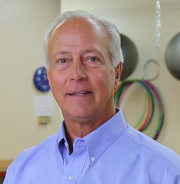We are at Caves Valley Golf Club in Baltimore, Maryland for the second leg of the FedEx Playoffs. The physical challenges of the course being hilly and the weather hot and humid will be a big test to the PGA golfers. To be playing at this stage of the season reflects that you have played well and frequently over the past couple of months. All of the top 50 golfers playing this week will find out how good their training regimes were pre-season and during the season. Not to mention the mental strain of intense weekly competition. Finishing one tournament successfully only to reload to maximize performance and continue to the Tour Championship the following week.
PGA golfers are coming into the Therapy Performance Center with various ailments. The strength and endurance demands on their bodies has shown this week that the greatest physical stress on their bodies is to their hips. Golf puts tremendous strength and mobility demands on the golfer’s hips with each swing. It comes as no surprise that the repetitive number of swings over a prolonged duration with no breaks will stress the best conditioned hips.
Specifically this week players are complaining of more tightness, achiness and dull pain in their lead hip. When you think of the speeds of their golf swings that demand a strong lead leg to post on this can be expected. The lead hip may be the most important body part to control the accelleration and deceleration forces with every golf swing. The slightest dysfunction in the lead hip will feed into numerous negative swing accommodations golfers try to avoid.
All muscles around the lead hip have to be evaluated and treated. All hip flexors, deep internal and external rotators, Iliotibial band, and glutes (specifically the gluteus medius), and all layers of the lumbar musculature have to be addressed with manual therapy. Any muscles showing deficiency in strength, stability, flexibility and mobility have to be restored to their full capability for performance to occur.
This time of year the value of the staff chiropractors and physical therapists cannot be underestimated. Their depth of knowledge and efficiency of their manual skills is crucial to restore body function as soon as possible. After a long successful season the job the golfer faces is not done yet. The responsibility of our sports medicine staff is not to have the PGA golfer limp to the finish line but to finish strong!

